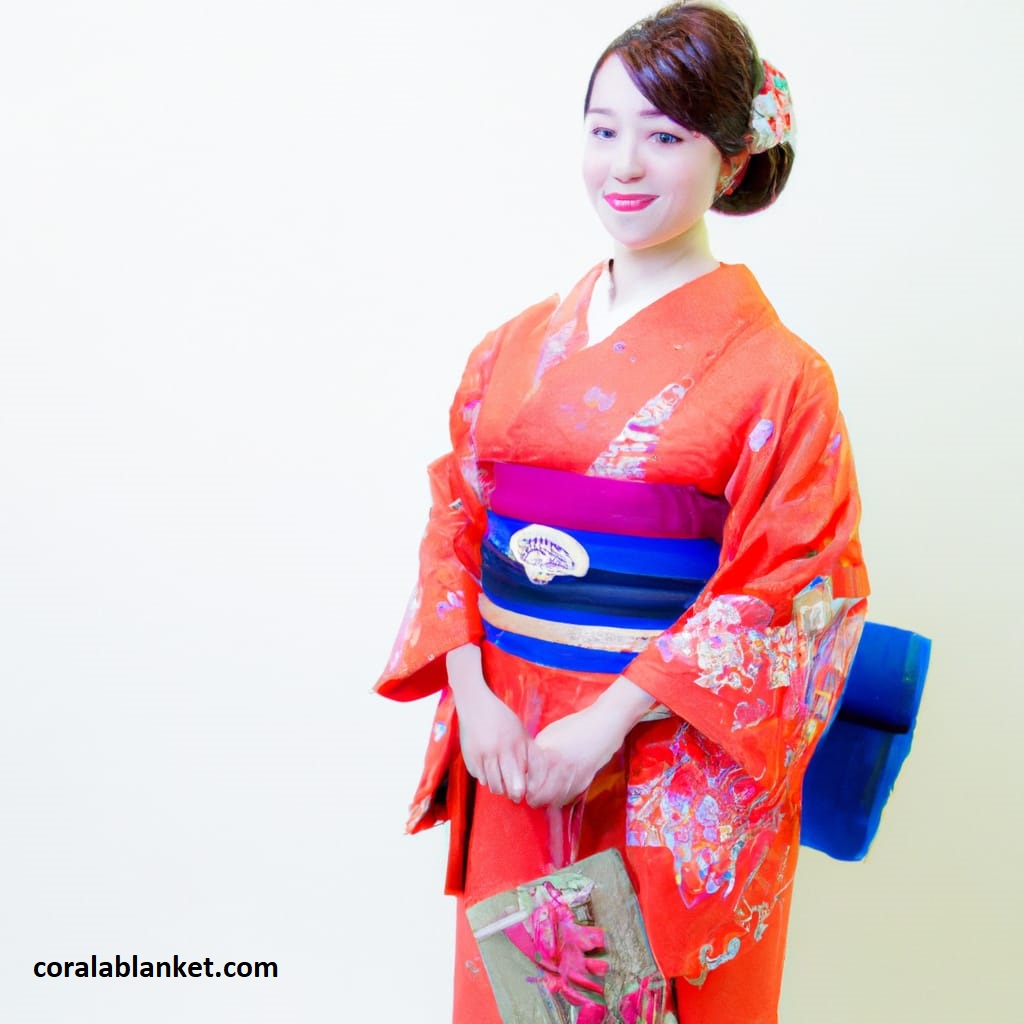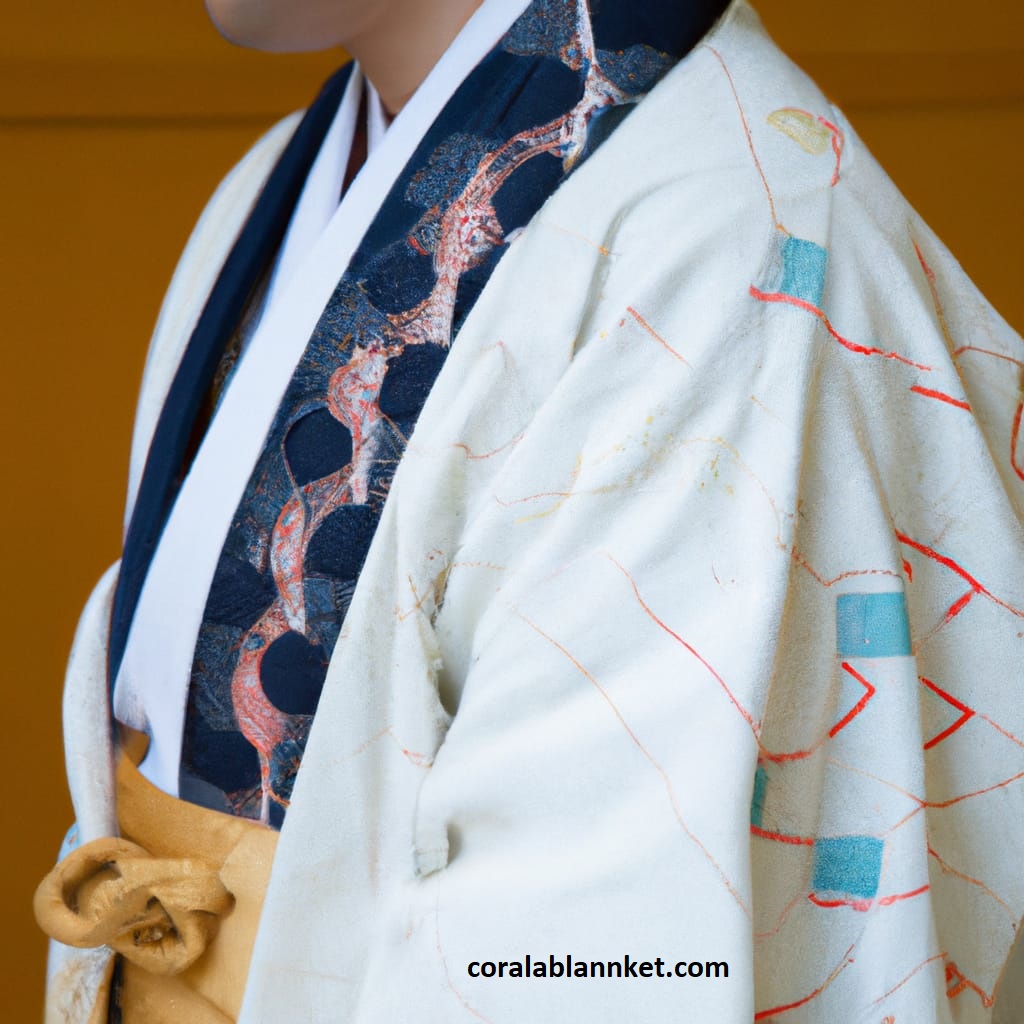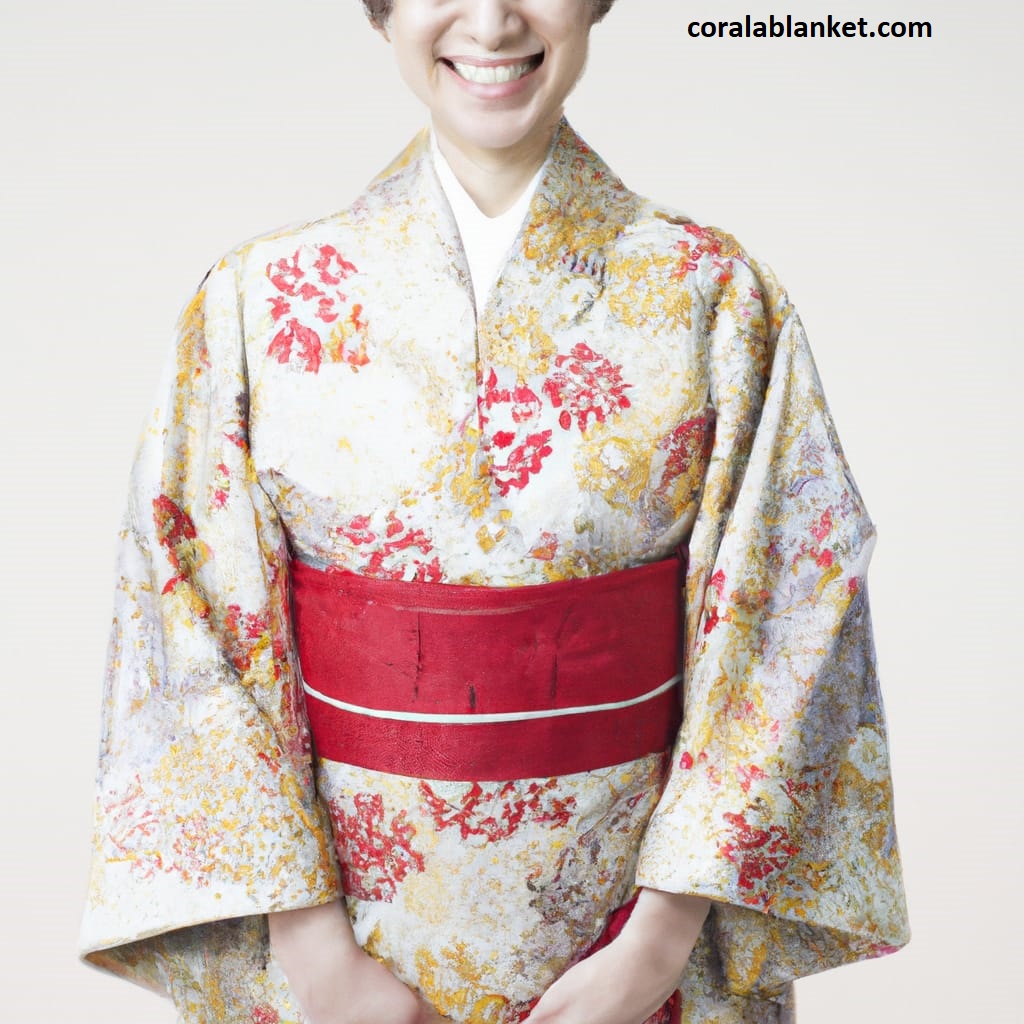Table of Contents
Sarashi Binding Wrap
Sarashi is a type of cloth used in traditional Japanese clothing, such as kimono. It is also known as a “kimono binding wrap” or “obi”.
The word sarashi comes from the verb 支える (saeru), which means “to support”. This is because sarashi was originally used to support and shape the body when wearing kimono.
Nowadays, sarashi are mostly worn by sumo wrestlers and martial artists, as they provide good support for the body and help to prevent injuries.
Sarashi are also sometimes used as a fashion accessory, particularly by young people.
What is sarashi?
Sarashi (晒し) is a type of long, winding strip of white cloth, commonly made of cotton or linen, primarily used in Japan to make garments such as juban (a kind of under-kimono), fundoshi, or tenugui. The sarashi is also sometimes wrapped around the body under a kimono to form a haramaki, or around the chest to bind the breasts.

Historically, sarashi were worn under kimono both by samurai (to resist injury) and by women (for more “obvious” reasons, particularly in eras when a slim figure was considered fashionable).
Sarashi binding
Sarashi is a Japanese kimono binding wrap, originally used by samurai to protect their midriff, it is also worn by women to give their midriff a slim look. Its traditional association with samurai has made it a symbol of toughness in Japanese culture.
How to wear sarashi?
How do you wear sarashi?
Step 1: Cut the sarashi to your desired size. It should be long enough to wrap around your midriff up to your chest.
Step 2: Roll up the cloth and place it beneath your armpits without wrinkling it. Make sure it is tight but not too tight.
Step 3: Wrap the cloth around your midriff and chest in a spiral pattern until you reach the desired length. Make sure it is not too tight as it may cause discomfort.
Step 4: Tie a knot at the end of the cloth to keep it in place.
Example: To give an example of how to wear a sarashi, a typical male bosozoku would typically wear it under their shirt or blouse. Start by cutting the cloth to the desired length, roll it up and place it beneath your armpits. Then, wrap it around your midriff and chest in a spiral pattern until you reach the desired length.
What are the uses of sarashi?
1. To bind the breasts of women to achieve a flat appearance.
Sarashi is a traditional Japanese form of cloth wrapping which uses bleached, 100% cotton fabric folded and wrapped in specific styles. It is typically worn either around the waist or chest and has been used by Japanese samurais since ancient times. Sarashi is commonly used to bind the breasts of women to achieve a flat appearance.
The process of binding the breasts with sarashi starts with selecting the right fabric, which is usually 100% cotton and similar to cotton gauze. The fabric is then folded and wrapped around the chest in specific styles. The bind should be tight enough to flatten the chest, but not so tight as to cause discomfort or injury. To ensure the bind stays in place, an additional garment such as a sports bra or girdle may be worn overtop.
Sarashi is also used as an undergarment for traditional Japanese outfits such as kimonos. It is typically worn under the Happi coat at Matsuri festivals. Men wear it around their waist, while women use it to cover their chest. Additionally, Matsuri Sarashi is often used to make the chest appear flat.
In modern times, there are other undergarments available which can be used to achieve the same effect as sarashi – but not suggested to use after breast augmentation. A modern sports bra or girdle are suitable alternatives and will provide the same results.
2. Used as a clothing accessory in traditional Japanese clothing, such as the kimono
Sarashi is a traditional Japanese fabric used for a variety of clothing accessories. It is a long, white cloth typically made of cotton or hemp, measuring 34 cm in width and between 2 to 10 m in length. It is traditionally used by wrapping it around the stomach or chest.
In samurai times, sarashi was used to protect the abdomen from sword cuts. In modern times, it is worn under a hanten or happi (a short coat usually worn during festivals or by some workers) and some men wear it as a loincloth. It is also used as an undergarment for kimono and a bra or chest binder for women. In addition, it is seen in manga and anime, often worn by costume players.
3. Used to compress and support the abdomen.
Sarashi is a traditional Japanese fabric which has been used since samurai times to compress and support the abdomen during battle. It is commonly used to flatten the chest for cosplaying as well as binding for transmen. Sarashi can also be worn under a kimono or happi coat for added support and comfort. It is ideal for pregnant women as it can add extra support for the growing belly. Sarashi is a very versatile and practical fabric for any number of uses.

4. Used as an aid in training in martial arts, such as karate, kendo, and judo.
Sarashi help with martial arts training by providing an extra layer of protection from injury, as well as a sense of strength and virility to the fighter. The cotton cloth can absorb sweat and help the fighter maintain a good grip on their weapon, and its tight wrapping can also help protect against stab wounds.
5. Used to conceal the chest and navel of crossdressers.
The purpose of a sarashi worn by crossdressers is to conceal the chest area and give the appearance of a more androgynous or masculine figure. Sarashi is a traditional Japanese fabric which is often seen in Anime and manga, and it is popular among costume players.
For those wanting to crossdress, sarashi provides a way to flatten the chest and give a more masculine silhouette. Modern alternatives, such as sport bras and girdles, can also be used to achieve the same effect. However, ace compression bandages should never be used as they can become increasingly tight and can even break the ribcage.
Sarashi has been historically used by warriors in Japan as a form of protection in battle, and also to symbolize strength and virility. It is still used today in Japan under traditional kimono outfits. It is also used by Japanese delinquent groups such as bosozoku, yakuza, and yankii to create a rebellious and tough appearance. Sarashi provides a way for men to hide their tummies, and for women to avoid envy from other women.
6. Used to support the abdomen and back during pregnancy.
The use of a sarashi during pregnancy is to provide support and comfort to the abdomen and growing belly. It is worn under the Happi coat, and some women use it to cover their chest and provide additional support. Sarashi is a long cloth typically made of cotton or hemp thread that is wrapped around the stomach to help provide relief and protection during pregnancy. It is also breathable and lightweight which makes it an ideal choice for comfort and protection.
7. Used as a first aid for bruises and swelling.
Sarashi can be used as a first aid for bruises and swelling. Here is a step-by-step guide:
- Rinse the affected area with cold water and then pat dry.
- Cut a piece of Sarashi, large enough to cover the affected area.
- Wrap the Sarashi around the affected area gently, but firmly.
- Secure the Sarashi with a safety pin.
- Leave the Sarashi on for at least 15 minutes, or until the swelling and bruising subsides.
- Remove the Sarashi and rinse the area with cool water.
8. Used as a form of self-expression and fandom.
Sarashi is a form of self-expression and fandom used in many different ways, such as costume play and Matsuri festivals. It is commonly worn as a wrap around the chest or stomach, by both men and women, at these events. It is also popular among cosplayers, as it provides a convenient way to conceal the chest or stomach of a character in order to accurately portray them.
Additionally, sarashi fabric has been used for playful fanservice costumes, such as Playboy Bunnies and Catholic School Girls, as well as traditional fashion garments like the Happi coat. Sarashi is also a symbol of strength, as it is often used by characters in anime and manga to denote tough guys or warriors. In this way, sarashi is a versatile fabric that can be used for a variety of different purposes, both as an expression of fandom and as a fashion statement.
9. Use a Sarashi After Gastric Sleeve Surgery
After surgeries like gastric sleeve surgery, your abdomen may require support, wearing a sarashi post-op can help provide some compression and support to the surgical area.
FAQs
How is Sarashi used in Japanese culture?
Sarashi is a traditional white cotton fabric used widely in Japanese culture.
- In high-class restaurants and sushi restaurants, it is used for various purposes such as a bra, an undershirt worn beneath a kimono, and an undergarment for a traditional outfit.
- For samurai, it had a role to prevent internal organs from spilling out if they were cut on the abdomen by a sword.
- In summertime, it is often used as clothes due to its highly porous material.
- At festivals, it is sometimes worn under a hanten or happi, while some males use it as a loincloth.
Sarashi is also used as a material in various ways. It can be sewn up and used as a diaper or duster, and people sometimes put a few dusters together to form a decorative cloth. It is also used to make hada-juban, an undershirt with tie strings worn beneath a kimono. In the old days, torn sarashi was also used as a substitute for bandage due to the shortage of gauze. Additionally, pregnant women sometimes use Sarashi (called ‘oharaobi’ in this case) with the hope of an easy delivery.
In Anime and manga, sarashi wrapping around the chest or stomach is seen quite often, and it is popular among costume players. All in all, Sarashi is an incredibly versatile fabric that is deeply rooted in Japanese culture and is used for many different purposes in everyday life.
Is Sarashi good for deep pressure
Sarashi is not specifically designed for deep pressure, some people may find it helpful for providing a light to moderate amount of pressure or compression. However, it’s important to note that deep pressure therapy typically involves the use of weighted blankets, vests, adult swaddle or other specialized equipment designed for this purpose. These items are specifically designed to provide consistent, evenly distributed pressure to the body, which can have a calming and grounding effect for some people.
Sleeping in sarashi
Sleeping in sarashi may not be the most comfortable option. Sarashi is a lightweight and breathable fabric that can be used for making clothing, bandages, and even adult swaddle blankets. However, it is not typically designed for sleeping in.
If you are interested in sleeping with a fabric that provides a similar sensation to sarashi, you could explore other options for deep pressure therapy, such as weighted blankets, adult swaddle blankets or compression garments, that are specifically designed for promoting relaxation and improving sleep quality.
- 10 Dreamy Victorian-Inspired Bedroom & Sleepwear Sets - May 13, 2025
- 10 Best Cottagecore Bedroom Sets With Matching Sleepwear - May 13, 2025
- Why Leopard Print Makes Perfect Sleep-To-Style Moments - May 13, 2025

